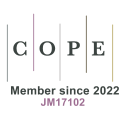REFERENCES
1. Ritchie H, Roser M. “Natural disasters,” Our world in data. 2014.
2. Guha-Sapir D, Hargitt D, Hoyois P. Thirty years of natural disasters 1974-2003: the numbers. Belgium: Presses Universitaires de Louvain, 2004.
3. Museru L, Mcharo C, Leshabari M. Road traffic accidents in Tanzania: a ten year epidemiological appraisal. East Cent Afr J Surg 2002;7. Available from: https://www.ajol.info/index.php/ecajs/article/view/136656 [Last accessed on 2 June 2023]
4. Jiang C, Lu L, Chen S, Lu JJ. Hit-and-run crashes in urban river-crossing road tunnels. Accid Anal Prev 2016;95:373-80.
5. Sanga P, Giesecke AH, Wilson WC, Sutcliffe AJ. Trauma: emergency resuscitation, perioperative anesthesia, surgical management. USA: Informa Healthcare USA, Inc.; 2007. pp. 1-23.
6. Huang TR, Zhang SW, Chen WQ, et al. Trends in nasopharyngeal carcinoma mortality in China, 1973-2005. Asian Pac J Cancer Prev 2012;13:2495-502.
7. MacGillivray I, Spitz B, De Wel M, van Assche A. Maternal mortality and morbidity in Belgium. Biol Neonate 1989;55:30-3.
8. Boing AF, Rossi TF. Temporal trend in and spatial distribution of lung cancer mortality in Brazil between 1979 and 2004: magnitude, regional patterns, and gender-related differences. J Bras Pneumol 2007;33:544-51.
9. Kwon OH, Rhee W, Yoon Y. Application of classification algorithms for analysis of road safety risk factor dependencies. Accid Anal Prev 2015;75:1-15.
10. Grimm M, Treibich C. Determinants of road traffic crash fatalities across Indian States. Health Econ 2013;22:915-30.
11. Zhao Z. Adult mortality in Asia. In: Rogers RG, Crimmins EM, editors. International handbook of adult mortality. Dordrecht: Springer; 2011. pp. 133-50.
12. Sánchez-Triana E, Enriquez S, Larsen B, Webster P, Afzal J. Sustainability and poverty alleviation: confronting environmental threats in Sindh, Pakistan: The World Bank, 2015.
13. Çelik AK, Senger Ö. Risk factors affecting fatal versus non-fatal road traffic accidents: the case of Kars province, Turkey. J Traffic Transp Eng 2014;4:339-51.
14. Herttua K, Mäkelä P, Martikainen P. Changes in alcohol-related mortality and its socioeconomic differences after a large reduction in alcohol prices: a natural experiment based on register data. Am J Epidemiol 2008;168:1110-8; discussion 1126-31.
15. Heeley EL, Wei JW, Carter K, et al. Socioeconomic disparities in stroke rates and outcome: pooled analysis of stroke incidence studies in Australia and New Zealand. Med J Aust 2011;195:10-4.
16. Kristiansen T, Lossius HM, Rehn M, et al. Epidemiology of trauma: a population-based study of geographical risk factors for injury deaths in the working-age population of Norway. Injury 2014;45:23-30.
17. Chang K, Wu CC, Ying YH. The effectiveness of alcohol control policies on alcohol-related traffic fatalities in the United States. Accid Anal Prev 2012;45:406-15.
18. Joyia MQ, Murtaza M, Aslam MA, Irfan F, Liaqat H, Naumani AR. Predictive accuracy of Apache-II for mortality in poly trauma patients. TPMJ 2020;27:2314-9.
19. Mortality caused by road traffic injury (per 100,000 population). 2020. Available from: https://data.worldbank.org/indicator/SH.STA.TRAF.P5 [Last accessed on 2 June 2023].
20. Ghaffar A, Hyder AA, Masud TI. The burden of road traffic injuries in developing countries: the 1st national injury survey of Pakistan. Public Health 2004;118:211-7.
21. Hrymak V, Perezgonzalez J. The costs and effects of workplace accidents: 20 case studies from Ireland; Health and Safety Authority Series; 2007. Available from: https://arrow.tudublin.ie/cgi/viewcontent.cgi?article=1000&context=schfsehrep [Last accessed on 14 June 2023].
22. Villaveces A, Mutter R, Owens P, Barrett M. Causes of injuries treated in the emergency department, 2010. UMBC School of Public Policy Collection; 2013. Available from: https://pubmed.ncbi.nlm.nih.gov/24006548/ [Last accessed on 14 June 2023].
23. Friedman G, Silva E, Vincent JL. Has the mortality of septic shock changed with time? Crit Care Med 1998;26:2078-86.
24. Ainuddin S, Routray JK. Institutional framework, key stakeholders and community preparedness for earthquake induced disaster management in Balochistan. Disaster Prev Manag 2012;21:22-36.
25. Choukolaei HA, Ghasemi P, Goodarzian F. Evaluating the efficiency of relief centers in disaster and epidemic conditions using multi-criteria decision-making methods and GIS: a case study. Int J Disaster Risk Reduct 2023;85:103512.
26. Simonsen J, Bærenholdt JO, Büscher M, Scheuer JD. Design research: synergies from interdisciplinary perspectives. UK: Routledge, 2010.
27. Kothari CR. Research methodology: methods and techniques. New Delhi: New Age International, 2004.
28. McMillan JH, Schumacher S. Research in education: evidence-based inquiry. USA: MyEducationLab Series, Pearson, 2010.
29. Jick TD. Mixing qualitative and quantitative methods: triangulation in action. Adm Sci Q 1979;24:602-11.
30. Osborne JW, Costello AB, Kellow JT. Best practices in exploratory factor analysis. Pract Assess Res Evaluation 2005;10:1-9.
31. Martínez-Mesa J, González-Chica DA, Duquia RP, Bonamigo RR, Bastos JL. Sampling: how to select participants in my research study? An Bras Dermatol 2016;91:326-30.
32. Callen M, Gulzar S, Hasanain A, Khan AR, Khan Y, Mehmood MZ. Improving public health delivery in Punjab, Pakistan: issues and opportunities. The Lahore Journal of Economics; 2013. p. 249. Available from: https://projects.iq.harvard.edu/files/epod/files/improving_public_health_delivery_in_punjab_pakistan.pdf [Last accessed on 14 June 2023].
33. Ghasemi P, Goodarzian F, Abraham A, Khanchehzarrin S. A possibilistic-robust-fuzzy programming model for designing a game theory based blood supply chain network. Appl Math Model 2022;112:282-303.
34. Rathore MF, Rashid P, Butt AW, Malik AA, Gill ZA, Haig AJ. Epidemiology of spinal cord injuries in the 2005 Pakistan earthquake. Spinal Cord 2007;45:658-63.
35. Ghasemi P, Goodarzian F, Abraham A. A new humanitarian relief logistic network for multi-objective optimization under stochastic programming. Appl Intell 2022;52:13729-62.






